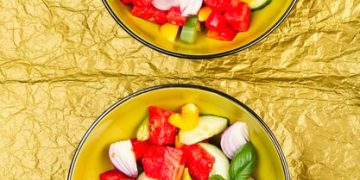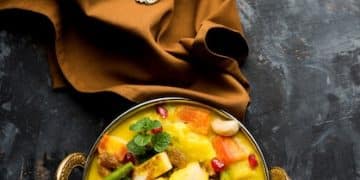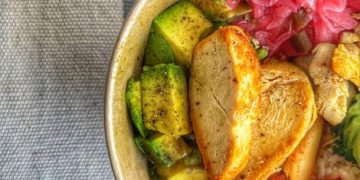Gluten-Free Recipes: 5 Delicious and Healthy Options for Celiac Disease
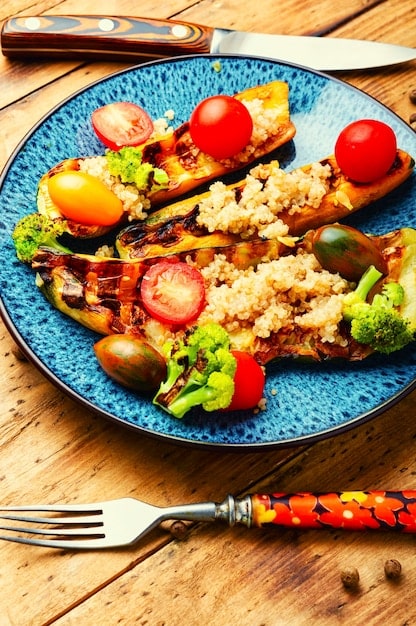
Gluten-free goodness extends beyond restrictive diets, offering a world of delicious and healthy recipes tailored for individuals with celiac disease, ensuring they can enjoy flavorful meals without compromising their health.
Embarking on a gluten-free journey, especially when managing celiac disease, doesn’t mean sacrificing flavor or enjoyment. Discover the Gluten-Free Goodness: 5 Delicious and Healthy Recipes for People with Celiac Disease that will tantalize your taste buds while keeping your health in check!
Understanding Celiac Disease and Gluten Sensitivity
Celiac disease is an autoimmune disorder where the ingestion of gluten leads to damage in the small intestine. It’s essential to understand the implications of this condition for those who have it.
Beyond celiac disease, many people experience gluten sensitivity, also known as non-celiac gluten sensitivity (NCGS). While not an autoimmune response, it can cause similar symptoms such as bloating, fatigue, and gastrointestinal discomfort.
The Importance of a Gluten-Free Diet
For individuals with celiac disease, adhering to a strict gluten-free diet is the primary treatment. This means avoiding all foods and products that contain wheat, barley, rye, and triticale.
A gluten-free diet can alleviate symptoms, promote healing of the small intestine, and prevent long-term complications associated with celiac disease. It’s not just a trend; it’s a necessity for managing the condition.
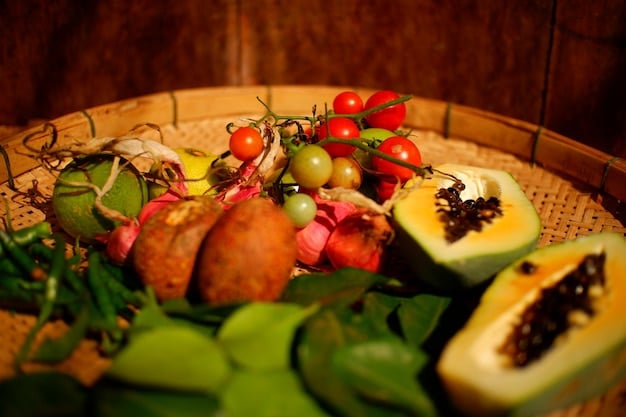
- Read Labels Carefully: Gluten can hide in unexpected places, so always scrutinize ingredient lists.
- Cross-Contamination Awareness: Ensure your kitchen is free from gluten contamination, as even small amounts can trigger a reaction.
- Seek Professional Guidance: Consult with a registered dietitian or healthcare provider for personalized dietary advice.
Navigating the world of gluten-free eating requires diligence and knowledge. Understanding the conditions related to gluten and the importance of dietary management is key to maintaining optimal health.
Essential Gluten-Free Pantry Staples
Stocking your pantry with gluten-free staples is crucial for easy and enjoyable gluten-free cooking. Having the right ingredients on hand makes meal preparation a breeze.
Think of versatile items that can be used in multiple recipes, such as gluten-free flours, grains, and seasonings. These items are the foundation of any successful gluten-free kitchen.
Gluten-Free Flours and Their Uses
There are numerous gluten-free flour options available, each with unique properties. Experimenting with different flours can enhance the texture and flavor of your baked goods and dishes.
Popular choices include almond flour, rice flour, tapioca flour, and coconut flour. Blending different flours often yields the best results, mimicking the texture of wheat flour.
Grains and Alternatives
Many naturally gluten-free grains are excellent additions to your diet. Quinoa, rice, oats (ensure they are certified gluten-free), and corn are all great choices.
Consider pseudo-grains like amaranth and buckwheat, which are nutritious and versatile. These grains can be used in salads, soups, and even as a base for gluten-free pizza crusts.
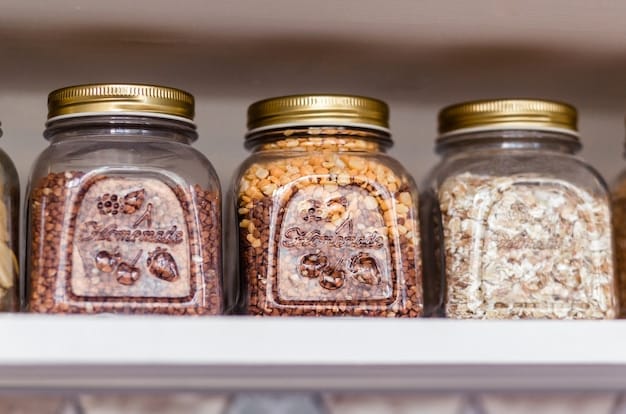
- Xanthan Gum: This acts as a binding agent in gluten-free baking, providing structure and preventing crumbles.
- Gluten-Free Soy Sauce: Many soy sauces contain wheat, so opt for tamari or gluten-free versions.
- Naturally Gluten-Free Spices and Herbs: Ensure your spices and herbs are free from additives containing gluten.
Having a well-stocked gluten-free pantry not only simplifies cooking but also expands your culinary horizons. Experiment with different ingredients to discover your favorite gluten-free creations.
Recipe 1: Quinoa Power Bowl
Kickstart your day with a nutritious and vibrant Quinoa Power Bowl. This recipe is packed with protein, fiber, and essential nutrients, making it a perfect gluten-free breakfast or lunch option.
Quinoa is a complete protein source, meaning it contains all nine essential amino acids. Combined with fresh vegetables and a zesty dressing, it’s a complete and satisfying meal.
Ingredients You’ll Need
To make the Quinoa Power Bowl, gather the following ingredients: cooked quinoa, mixed greens, cherry tomatoes, cucumber, avocado, grilled chicken or chickpeas, and a lemon-tahini dressing.
Ensure all ingredients are fresh and gluten-free. Opt for organic produce whenever possible for added health benefits.
Preparing the Lemon-Tahini Dressing
The dressing is key to bringing all the flavors together. Mix tahini, lemon juice, garlic, water, and a pinch of salt and pepper until smooth and creamy.
Adjust the consistency by adding more water if needed. This dressing is incredibly versatile and can be used on other salads and dishes as well.
Combine all ingredients in a bowl, drizzle with the lemon-tahini dressing, and enjoy! This Quinoa Power Bowl is not only delicious but also a nutritional powerhouse.
Recipe 2: Almond Flour Pancakes
Enjoy a stack of fluffy and delicious Almond Flour Pancakes without any gluten. This recipe is simple, quick, and perfect for a weekend brunch.
Almond flour adds a nutty flavor and a delightful texture to these pancakes. They are also a great source of protein and healthy fats.
Simple Ingredients for Delicious Pancakes
To make Almond Flour Pancakes, you’ll need almond flour, eggs, milk (dairy or non-dairy), baking powder, honey, and a pinch of salt.
These ingredients are easy to find and can be adjusted to suit your dietary preferences. Experiment with different milk options for varied flavors.
- Low Carb: These are lower in carbs when compared to traditional wheat flour pancakes.
- Nutrient Rich: Almond flour contains several nutrients, including vitamin E and magnesium.
- Versatile: Add blueberries, chocolate chips, or other toppings for extra flavor.
Mix all ingredients together in a bowl, heat a lightly oiled griddle or frying pan, and pour batter onto the hot surface. Cook until golden brown on both sides.
Serve with your favorite toppings such as maple syrup, fresh fruit, or whipped cream. These Almond Flour Pancakes are a delightful and guilt-free treat.
Recipe 3: Coconut Chicken Curry
Indulge in a creamy and aromatic Coconut Chicken Curry that’s both comforting and gluten-free. This recipe is packed with flavor and easy to customize to your spice preference.
Coconut milk adds richness and depth to the curry, while the chicken provides a lean source of protein. Serve with rice or quinoa for a complete meal.
Preparing the Aromatic Curry Paste
The base of this curry is a blend of ginger, garlic, chili, and spices. You can use a store-bought curry paste or make your own for a more authentic flavor.
Sauté the curry paste in coconut oil to release its aromas before adding the chicken and vegetables.
- Adjust Spice Level: Add more or less chili depending on your preference.
- Vegetable Variations: Include your favorite vegetables such as bell peppers, broccoli, or spinach.
- Serve with Rice or Quinoa: Pair this curry with a gluten-free grain for a complete meal.
Sauté the chicken and vegetables in the curry paste, then add coconut milk and simmer until the chicken is cooked through and the flavors have melded together. Garnish with fresh cilantro and serve hot.
This Coconut Chicken Curry is a flavorful and satisfying meal that’s perfect for a cozy night in.
Recipe 4: Gluten-Free Pizza with Cauliflower Crust
Enjoy a guilt-free and delicious pizza with a Gluten-Free Pizza with Cauliflower Crust. This recipe is a healthier alternative to traditional pizza, without compromising on taste.
Cauliflower crust is a great way to add vegetables to your diet while keeping your meal gluten-free. Top with your favorite toppings for a customizable pizza experience.
Making the Cauliflower Crust
To make the cauliflower crust, you’ll need riced cauliflower, eggs, cheese (such as mozzarella or parmesan), and Italian seasoning. Steam the cauliflower until tender, then squeeze out excess moisture using a cheesecloth or towel.
Mix the cauliflower with the other ingredients and press onto a baking sheet. Bake until golden brown before adding your toppings.
- Squeeze Out Moisture: This is crucial for a crispy crust.
- Add Cheese: Cheese helps bind the crust together and adds flavor.
- Pre-Bake the Crust: Baking the crust before adding toppings ensures it’s firm and doesn’t get soggy.
Top the pre-baked cauliflower crust with your favorite pizza sauce, cheese, vegetables, and protein. Bake until the cheese is melted and bubbly.
This Gluten-Free Pizza with Cauliflower Crust is a fun and healthy way to enjoy pizza without the gluten.
Recipe 5: Chocolate Avocado Mousse
Indulge in a decadent and healthy dessert with Chocolate Avocado Mousse. This recipe is surprisingly easy to make and packed with healthy fats and antioxidants.
Avocado adds a creamy texture to the mousse, while the chocolate provides a rich and satisfying flavor. It’s a perfect treat for anyone with a sweet tooth.
The Secret Ingredient: Avocado
Don’t be afraid of using avocado in a dessert. It’s a great way to add healthy fats and a smooth, creamy texture without any noticeable flavor.
Combine avocado with cocoa powder, sweetener (such as maple syrup or honey), vanilla extract, and a pinch of salt. Blend until smooth and creamy.
- Refrigerate Before Serving: This allows the mousse to firm up and the flavors to meld together.
- Adjust Sweetness: Add more or less sweetener depending on your preference.
- Garnish with Berries: Fresh berries add a pop of color and flavor.
Pour the mousse into individual serving dishes and refrigerate for at least 30 minutes before serving. Garnish with fresh berries, chocolate shavings, or a sprinkle of cocoa powder.
This Chocolate Avocado Mousse is a guilt-free and delicious dessert that’s sure to impress.
| Key Point | Brief Description |
|---|---|
| 🍎 Gluten-Free Diet | Crucial for managing celiac disease and gluten sensitivity. |
| 🌾 Pantry Staples | Stock with gluten-free flours, grains, and alternatives. |
| 🍕 Cauliflower Crust | Healthy and gluten-free pizza alternative. |
| 🥑 Avocado Mousse | Delicious and healthy dessert option. |
Frequently Asked Questions
Celiac disease is an autoimmune disorder triggered by gluten, leading to damage in the small intestine. It necessitates a strict gluten-free diet to manage symptoms and prevent complications.
The primary ingredients to avoid are wheat, barley, rye, and triticale, as they all contain gluten. Always read labels carefully to identify hidden sources of gluten in processed foods.
To prevent cross-contamination, use separate cutting boards, utensils, and cookware for gluten-free foods. Thoroughly clean surfaces and avoid sharing appliances like toasters.
Oats are naturally gluten-free, but they are often processed in facilities that also handle wheat, barley, or rye. To ensure they are safe, choose certified gluten-free oats.
Naturally gluten-free grains include quinoa, rice, corn, amaranth, and buckwheat. These can be excellent alternatives to wheat-based grains and provide essential nutrients.
Conclusion
Navigating the world of gluten-free cooking can be both enjoyable and delicious. With these five recipes, you can explore the Gluten-Free Goodness: 5 Delicious and Healthy Recipes for People with Celiac Disease possibilities and create meals that are both satisfying and safe.
